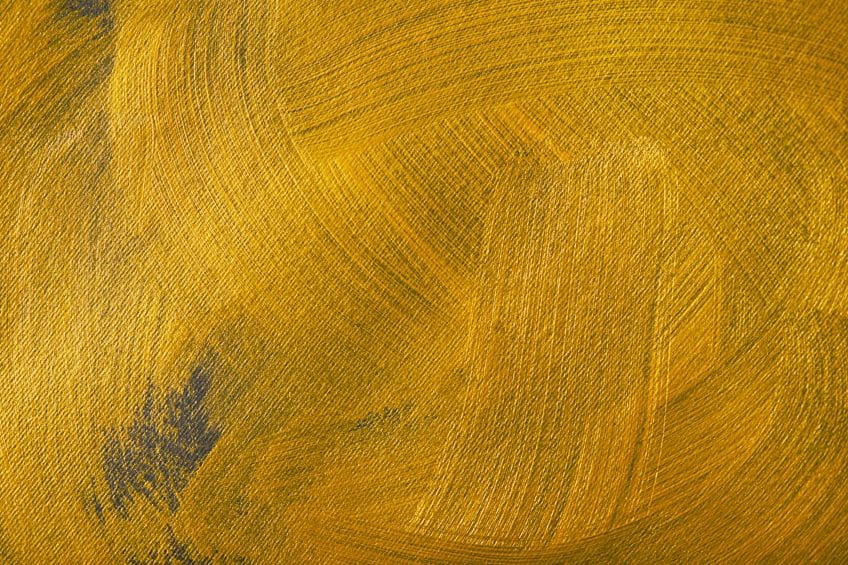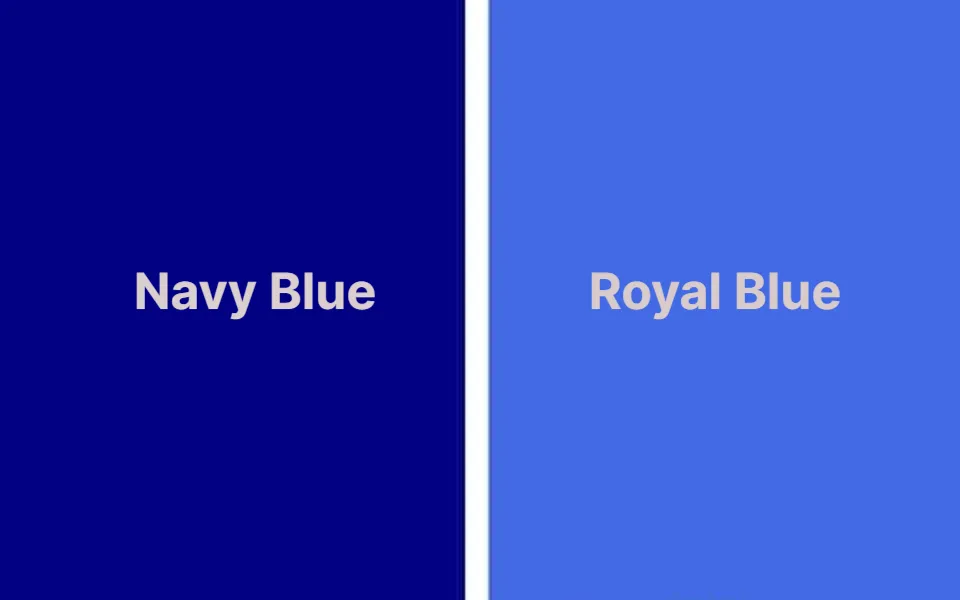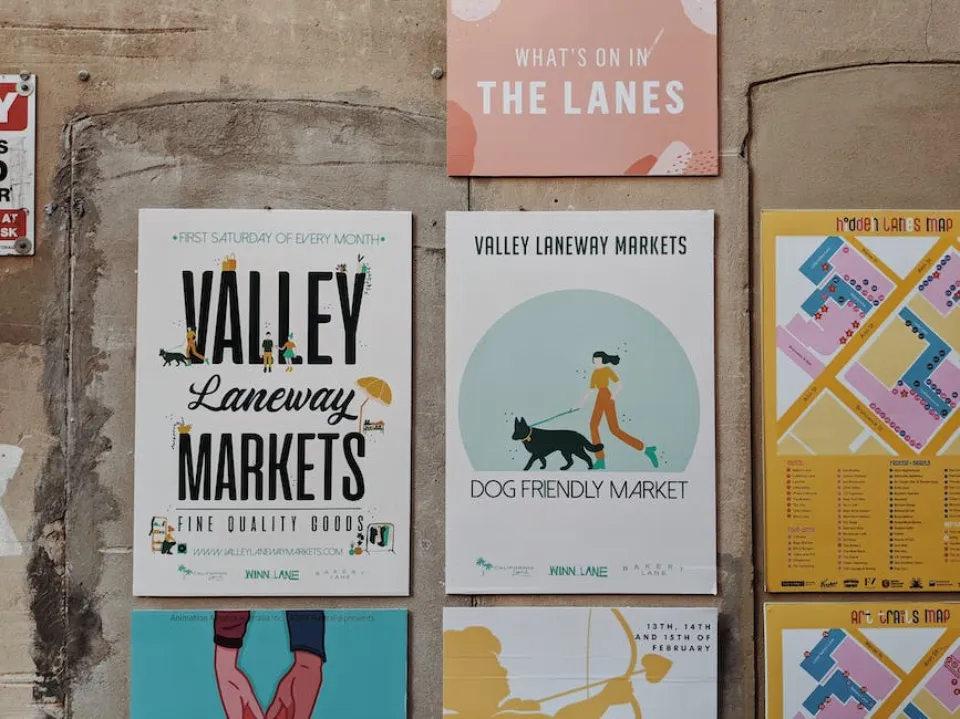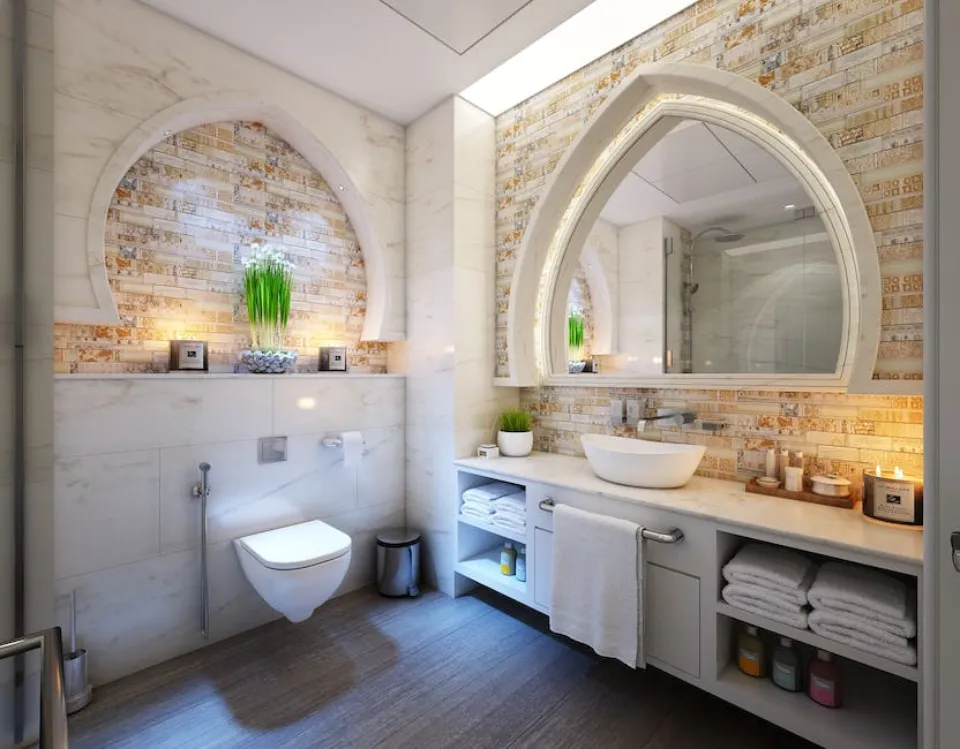Gold is a beautiful color to include in your painting palette because it is the color of money, opulence, and luxury. Making your own gold paint, though, can be challenging. You can find all the information you need in this article on mixing gold, whether you want to add a glittery sheen or just want to produce a golden hue.
So what colors make gold? Yellow and brown are the two colors that you can combine to make gold. These are the two primary colors that make gold, though you can tint it with additional colors.
Join us as we investigate the psychology of gold and the techniques you can employ to create gold paint.
Keep reading.
A Short History Of Gold
Over time, the color has primarily been inspired by gold metal, but there are other natural manifestations of the color in things like fall foliage, flowers, and sunlight. Gold is a wonderful color that has been utilized for a long time. In ancient times, yellow ochre was used as a popular pigment for the color gold; however, it is not quite the same as metallic gold. Thankfully, gold has evolved into a wide variety of forms over the years.
In their artwork, the ancient Egyptians and Romans employed a type of gold color made from brown, orange, and yellow pigments. In their art, the Egyptians represented ceremonial objects and other items in the color gold, which they revered as an eternal hue. They added a small amount of saffron to the yellow ochre to give it a golden hue. They also used solid gold for burial accessories, such as the renowned gold mask found on Tutankhamun. Gold is viewed as a symbol of power and immortality in Greek culture. The Greek sun god Helios is depicted in all of his appearances as having gold armor and driving a golden chariot. Greek deities were frequently depicted with golden or yellow hair.
Between the thirteenth and fourteenth centuries in Italy, gold leaf gained popularity and started to be used in paintings. Gold leaf was applied to religious artifacts like altarpieces during the middle ages, and this practice persisted into the Renaissance. In the early twentieth century, Gustav Klimt, now a well-known artist, used gold leaf in his paintings during what is known as his “gold phase”. Even now, the qualities of fortune, success, and elegance are associated with the color gold. Gold can be used in décor to add a touch of glitz and elegance in addition to being used in paintings and other forms of visual art.
A Closer Look At Glittering Gold
The color gold is one of the most overt representations of wealth and prosperity. It is named after what is possibly the most valuable metal on earth. Gold has always been highly prized throughout all cultures and historical eras. People always want to own and wear gold as both money and jewelry because it makes a good first impression. In addition to being a representation of wealth and luxury, gold also has a number of intriguing religious and cultural connotations.
Gold And Religion
In numerous religious settings, the color gold is frequently used. In religious iconography, gold is frequently used because it is a symbol of strength and divinity. Many Christian mosaics prominently display gold, serving as a visual reminder of the omnipotence and strength of their God. The color gold is associated with self-improvement, meditation, and knowledge for Hindu practitioners. In order to emphasize their boundless virtue and wisdom, many Hindu gods are depicted with haloes of gold around their heads.
Gold And Culture
Gold carries distinct meanings in various cultural contexts, as do all things in our world that have meaning. For instance, while the people of Cuba and Jamaica frequently associate gold with seafaring, Europeans see it as a color of religious or spiritual enlightenment and solidarity. Gold is often connected in Southern American cultures to the church and religion.
Although these cultures also link excessive gold with gluttony and arrogance, gold is typically depicted in North America and Canada as a color of toil, wealth, and luxury.
Gold And Success
Around the world, people associate success and victory with the color gold. The color gold stands for those who have tried and succeeded in their chosen field, from Olympic gold medals to the financial success displayed through items of gold. Many superstitious people view the color gold as a representation of luck and prosperity as a result of this successful association.
Suggested reading: Does Lowe’s sell Benjamin Moore Paint? Are you wondering if you can buy Benjamin Moore paint at Lowe’s? Is it simple to use and reasonably priced? If so, you’ve arrived at the appropriate location!
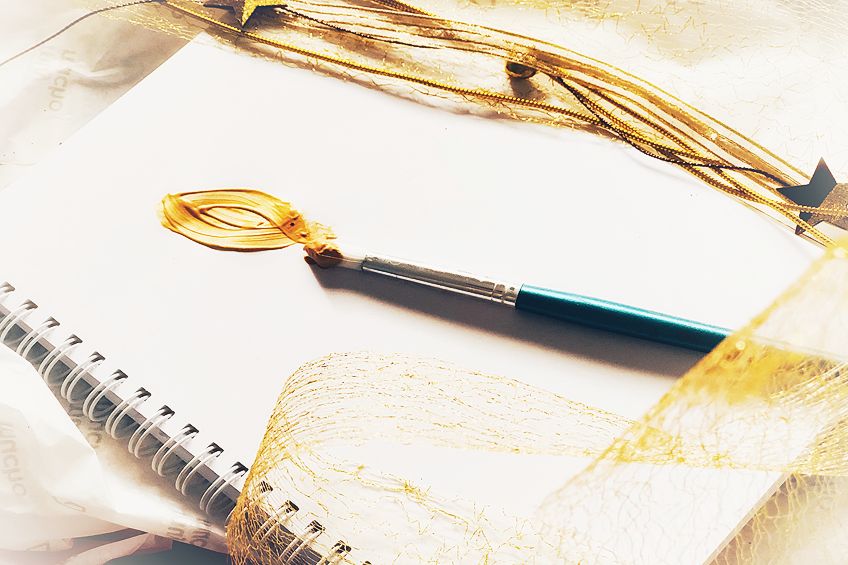
How To Make Gold Paint
It can be difficult to achieve the ideal golden color because some paintings may require several golden tones to achieve the desired effect. You must practice in order to get better at anything. The same is true for painting; trying new things and developing various golden tones will only help you get closer to your objective. The procedure is simple, and creating the desired color by blending several paint colors can be enjoyable. Glitter or pigment can be used to add a little bit more shine. Let us have a look at how to make the color gold with oil paints, watercolors, and acrylics.
Mix Gold With Oils
Consider studying an actual gold surface to paint gold that looks realistic or authentic. You might be astounded by what you see. You can stick to the color scheme of yellow and brown when making gold. However, you might be surprised at the more muted colorsinstead of the bright yellows and oranges. The trick to getting a more realistic gold look is to contrast brighter and more subdued colors.
Apply a neutral underglaze or background to your canvas if you want to achieve the color gold with oils. The overall color of an oil painting may be impacted by a white surface underneath. The addition of more than just white paint can improve adding highlights. Look for cooler hues, such as blue-gray or neutral shades of gray or black. If you want to avoid applying too many highlights, try applying the lightest highlights last so you can observe how they stand out. Any amount of bright color or highlight creates a sizable focal point. If you want to darken gold, pick blues or purples rather than just adding black to avoid giving it a muddy appearance. Here are some examples of color mixes for gold. Also, check out our color mixer online tool.
- Warm tones: burnt sienna, add small amounts of cadmium red and white. You can also add ultramarine for a darker tone, to this, also consider adding a little cadmium yellow
- Cool tones: burnt umber, add a small amount of ultramarine and white. For darker tones add small amounts of phthalo blue
How can I create a polished metallic effect? You could employ the glazing technique, which entails painting a thin, transparent layer of paint over the canvas and letting it dry. To thin your paint for a glaze, you can use an oil medium like linseed oil. The process for creating golden color with oil paints is therefore summarized here.
- Creating more realistic gold paintings, try to avoid the general idea that gold contains loads of yellow and lots of highlights
- You need the appearance of reflections, otherwise, the gold will simply appear dull
- If you study an actual gold surface, you should notice muted tones and highlights. For example, grays and blues
- Do not apply too many highlights and do not over apply bright colors
- Apply your muted colors and other more neutral colors before adding highlights and your brighter colors
Suggested reading: Off White color combines white with a trace of brown. It exudes an air of refinement, elegance, and regality. In designs where a more subdued aesthetic is desired, off white is used instead of pure white.
Mix Gold With Watercolors
Various shades of reds, oranges, pale yellow, and pale brown can be used to create different shades of golden color with watercolors. You must use gray or blue tones to add depth, shape, and shaded areas. In watercolors, bare spots on the page can aid in highlighting certain areas. You can also employ the following technique, which calls for a brush, water, gum Arabic, and gold pigment. Different metallic colors are available in some of the powders. Gum Arabic serves as the binder; without it, the mixture would not combine and the paper would not properly adhere to it.
- Place some of the gold powder into a mixing bowl
- Add a small amount of Arabic gum to the powder, adding too much can make the mixture dull
- Place your brush into some water and drip a little onto the mixture
- Mix everything until it becomes smooth
- Use a fine brush to apply the paint mixture
- Do not apply to wet watercolor paint, everything needs to be dry before you apply the gold mixture paint
- The gold mixture forms a paste, unlike watercolors so you might need to rinse your brush often so the paste will not accumulate
- You can also create a wash effect with the paste by simply making sure your brush is wet before dipping into the mixture and applying
- Use a separate brush for your watercolors and the gold paint
Mix Gold With Acrylic Paint
It may be easy to figure out how to make gold acrylic paint. The only way to elevate your artwork is through experimentation and the discovery of fresh tints and shades. For now, we’ll keep things simple by using acrylics to demonstrate the color of gold. Start by combining equal parts of yellow and brown paint. A color that resembles a goldenrod shade should result from this. You can use a brown paint tube, or if you prefer to have more color control, you can use only primary colors.
Green can be made by combining blue and yellow, and brown can be made by adding more yellow. To achieve the desired color, add the yellow in small amounts first and then test them. If you do add too much yellow, you can add a little bit of blue and red to help balance it out with some purple tones.
A 2:1 ratio of yellow to orange paint can be added, along with white if you think it’s necessary, to produce a brighter gold. Red and brown can be mixed to make a maroon color, which can then be brightened with yellow to make a deeper gold. You can add a tiny bit of red or orange to this to make it warmer, or you can add a hint of blue to make it cooler.
Finally, you can add some gold pigment if you want to add sparkle. First, add a tiny bit of white to your gold because lighter gold will shine more prominently. When you’ve achieved the color you want, add the pigment and blend. To get the metallic appearance, just a tiny pinch will do. Check your color on a different surface to see if it is the color you want. Remember that the metallic paint mixture will only produce its full effect after drying.
Suggested reading: One of the best ways to quickly improve the appearance and ambiance of a space where you probably spend a lot of time is by updating your kitchen cabinets. So, how much does it cost to paint kitchen cabinets?
How Are Rose Gold Colors Made?
You want to know how to make rose gold paint, right? Rose gold is quite a popular color and is often associated with elegance and style. The color has a strong pink or purple undertone with a golden hue, and we’ll talk about a few different ways to make it below.
Gold, red, white, and silver make up the first combination. First, combine your silver and gold paint in equal parts. Then, add red to some white that has been placed on your mixing surface or palette until a dark pink is achieved. Finally, combine the mixture of dark pink, gold, and silver.
To create a light pink color, add your white to some red paint to reach your desired pink color, and then mix this with the silver and gold mixture. You can incorporate some metallic pigment into the mixture to give your paint a more metallic appearance. To produce a warmer and darker rose gold shade, you can completely omit the white. Always keep in mind to gradually add red until you reach the desired color.
When it comes to what colors make rose gold, and you want to start from scratch, you can mix the gold and silver colors yourself instead of using them from a tube. By mixing your primary colors, you can produce your own custom shade of gold. White, a little black, and a little blue can be blended to create silver. But what you prefer to do will determine this.
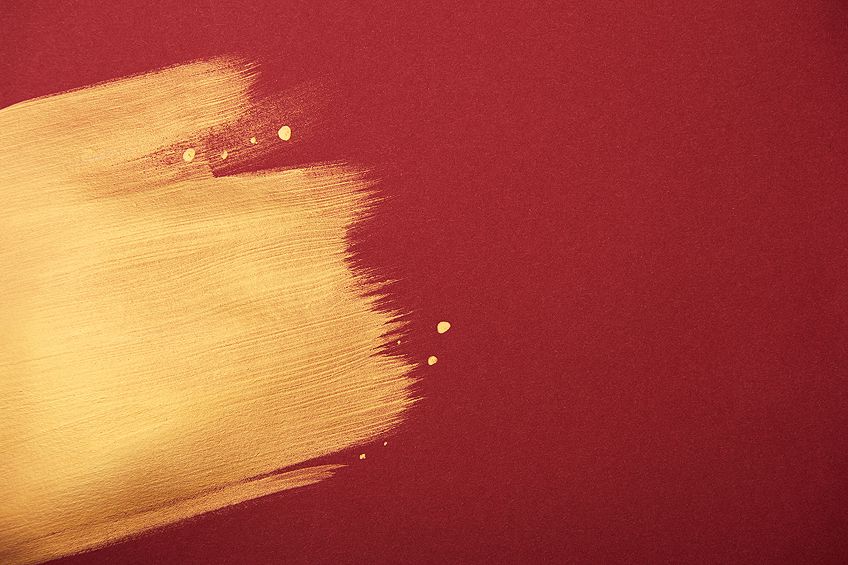
How To Make The Color Gold Pop In Your Paintings
We’ll talk about how to make the most of this stunning color now that you know how to make golden color paint. It’s all about the colors you use around a color to make it behave differently within a painting. When combined with various analogous and complementary colors, gold can become more vibrant, subdued, or rich.
Make Your Golden Color Neutral
The secret is to use gold as a neutral base if you don’t want it to stand out too much in your painting. You must change the gold paint’s tone because the garishly bright gold color won’t be able to play a supporting role. You can add a bit more brown or a dash of gray to soften your gold paint. This approach will produce a gold color that is unassuming and does not draw a lot of attention.
Make Your Golden Color The Accent
In many cases, you want your gold to dominate your painting. Most frequently, gold is used as an accent color to draw the viewer’s eye to a specific aspect of a painting. Gold was made for the accent part because it draws our eyes naturally. You want your gold to be as vibrant and preferably glittering as possible to make it as eye-catching as possible.
More yellow or white can be used to brighten the gold, and gold luster powder can be added to paint to give it a metallic sheen.
Make Your Golden Color Richer
You now want to know how to make your painting’s final, gorgeous, and glowing golden shade appear even richer. Use it with colors that make it pop for the best results in making your gold paint appear richer.
Use A Base Color
Using a base color underneath your gold paint is one of the best ways to make it appear richer without using it in conjunction with other colors. Because red highlights the deep tones of your gold paint, it is the ideal base color to use. Just apply red paint, let it dry, and then paint your gold over it. Try it out; we promise you’ll be amazed at the difference it makes to the color of your gold.
Use Analogous Colors
Contrary to complementing shades, analogous hues are the opposite. These hues resemble the original shade in terms of warmth and tone. The analogous colors for gold are warm yellows, reds, and oranges. A painting can be given a vibrant energy boost by using analogous colors, but it’s important to keep in mind that using too many intensely warm hues can quickly become overwhelming.
Your gold will shine even more in a subdued red hue, but a bright, vivid red may blend in too much with the surrounding shade. Although technically speaking, yellow and gold are analogous colors, it is best to avoid using these two colors together in artwork. Simply put, yellow and gold are too similar to stand out clearly; the two colors will merge into one another.
Use Complementary Colors
Utilizing complementary colors with your gold can also help it stand out in a painting. Because gold is typically awarm color, using it alongside a cool complement is a great way to create a rich and dynamic effect. The two best complementary options are blue and purple, but with gold purple is the definite front-runner.
It’s critical to understand how light and dark shades interact when using gold with one of these complementary colors. Darker shades have a tendency to blend into lighter shades when combined.
As a result, if you were to outline a block of purple or blue with gold, the complement color would appear to sink while the gold would stand out. Additionally, using blue or purple to outline a section of gold paint will bring out the color’s brightness and make it pop off the canvas.
Use Neutral Colors
Utilizing your golden color with some neutral tones is the final way to make it shine even brighter. Without a clear color temperature, neutral colors tend to be accent colors rather than the main attraction. Due to their lack of vibrancy, brown and gray are excellent colors to pair with gold because they only serve to enhance its glimmer.
Black is another excellent color to pair with your gold, despite not technically being a neutral hue. Particularly if your gold has a lovely glittery sheen, the black’s depth really makes the gold stand out. When using gold with black, you should also make sure that it is vivid and bright because a muted, metallic gold can look a little muddy.
Silver Vs. Gold
Consider your end objectives whenever you are unsure of which metallic paint to use but are certain that you want to use metallic paint. Do you desire something tranquil and cool? Fun and festive? Warm and inviting?
You can choose the ideal metallic for your personality by determining your design preferences and your top priorities. The meanings of the most popular metallic paint types are listed below.
Silver
Any other color looks great with silver because it is such a stylish metallic. When designing, silver is a fantastic choice for contemporary styles because it is a neutral gray with a shimmer. Gray is always in.
Gold
Compared to silver, gold is bolder and much, much warmer. It frequently stands for money and success. It is more vintage than silver, but it is also a bolder choice. Silver is difficult to look vintage.
Pewter
Pewter is a dark alloy of metals with a beautiful appearance. Pewter was originally larger and more toxic than silver because it contained a lot of lead. Pewter is now safe to use, particularly in paint that doesn’t contain actual metals.
Bronze
Another warm metal that is a mixture of copper and tin and has a medium hue is called bronze. Although bronze tends to trend at different times than gold does, it is most often similar in color to vintage gold. Preference determines which option is preferred.
Brass
Because it resembles traditional gold so much, brass, a metal alloy made of copper and zinc, is frequently used in place of more expensive gold. This is a very sturdy metal that is frequently used for pipes, equipment, and hardware.
Copper
Another extremely cosy metal with an orange tint is copper. It is a special type of chemical that is used for wiring and is found in nature. One of the metal types that is most desired in interior design is one with an industrial appearance.
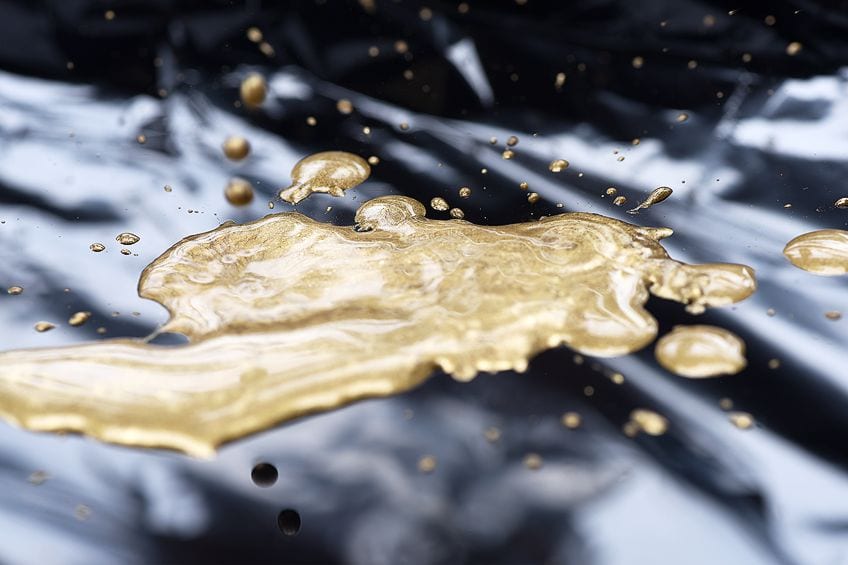
Taking Gold Paint To The Next Level
There are a few ways you can take your interior design to the next level, even though simply painting your walls flat gold can have a significant impact. If metallic paint isn’t available, this still works.
If you can, think of unique ideas to make your gold-painted project stand out from other projects you’ve seen. That’s what really distinguishes a project. Making it your own and displaying your originality to the world.
Flakes
For a completely different appearance, you can add gold flakes in place of simple metallic paint or sparkles. Even if the paint isn’t gold, gold flakes can make it look stunning. Try painting with gentle colors when using them.
Mixing Colors
No, I don’t mean blending two colors to produce a new hue. By applying gold paint over another color, I’m referring to creating a sponge texture. If you already have a specific color scheme in mind, this works well.
Ragging
You can give your walls texture by using the antiquated farmhouse method of ragging. It is incredibly simple to do and when finished, looks like marble. Just apply your finishing touches with a rag rather than a paintbrush.
Underneath Texture
Using drywall texture prior to painting is an easy way to add texture to your walls when using gold paint. You can choose from a wide variety of drywall textures, each with a unique design and level of difficulty.
Shades Of Gold Paint
As with any color, there are numerous shades of gold paint. Gold is not the only color. However, because there are two different kinds of gold paint—metallic and matte—it is challenging to categorize each color using a single word.
Instead, you should consider the various brands since each of them will offer a unique metallic paint. The metallic paints are all gold, which is what we want, whereas the matte paints are more yellow than gold.
So, instead of trying to find a “name” that you want, try to find a brand that you want. Search all of the paint brands and look for “metallic gold” because that is what you would be looking for. Take a look at their sunglasses after that.
Only two, three, or occasionally one metallic paint will be available from the majority of paint manufacturers. Goldenrod, light, and dark gold are the most common colors, along with bright gold. Decide on the shade you want after picking a brand.
See more about What Colors Make Navy Blue?
Frequently Asked Questions
What Does It Mean When Gold Is Lighter In Shade?
A lighter tint is produced by adding white or yellow. Darker hues will result in a different and darker shade of gold when added.
A Darker Gold Color: How Do You Make It?
You can use black in tiny amounts to make a darker shade of gold. Brown, on the other hand, might be more useful because it has more subdued effects. A cooler color can be produced by including the color blue. Just a touch of yellow will restore the color’s harmony if you add too much.
What Color Is Gold Paint Made Of?
You can just use paint straight out of the tube, but it might not be the precise shade you need. Therefore, it is a good idea to start blending all the primary colors in order to create different shades of gold. To make green, first combine yellow and blue; next, add red to make brown. Once you have the desired color, continue adding more yellow. After that, you can change the golden tone to the color you want.
How Many Colors Are In Gold?
Brown and small amounts of yellow must be combined in order to create the color gold when using two colors. Then, experiment by adding more yellow, red, or blue to the color to brighten, darken, or create warmer or cooler colors.
Is Gold Paint Right For Me?
Because gold paint is such a special kind of paint, answering this question is challenging. Not just in terms of color. Gold paint has to do with class, religion, and symbolism. Its significance is not universally understood.
But on the other hand, you don’t have to feel a connection to a color to want to use it in your home. There is only one question you must ask yourself before using gold paint, and anyone can do so. Will my upcoming project require gold paint?
